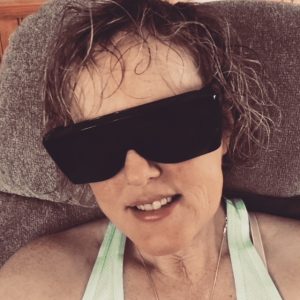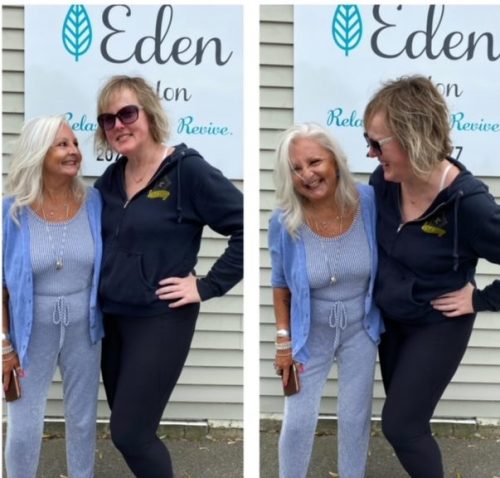How a Concussion Led to a Near-death Experience

Last in a series. Read part one.
People often are sympathetic when they discover I had back surgery at age 13 to have a Harrington rod placed as a treatment for idiopathic scoliosis. They seem stunned when I show them pictures of me in a full-body cast after surgery. “You wore that to school?” they’ll ask.
“School, church, and I even performed in a Christmas concert in that cast,” I reply with pride.
It was a tough experience, but I’m tougher.
Lemme tell ya, that whole experience pales in comparison to what I went through last July while recovering from a concussion and traumatic brain injury (TBI).
I am a rule follower. So, when I was sent home from the ER to rest for a month — which meant no social media, just rest — I listened. My son deactivated my Facebook account before giving me hugs and heading back to his place.
When I checked in with him the next morning, I still couldn’t hold a conversation. Any unexpected sound, whether it was a voice or the simple sound of a keyboard clicking, seared my brain with pain. Any light coming through my windows was unbearable.
“Get lots of rest, Mom. I love you!” my son said.
Sleep had evaded me for most of the previous week, yet hunkering down in my darkened bedroom was my only option.
I crawled into bed on July 2 and stayed there until the night of July 4. I wasn’t asleep — I was unconscious. I was aware of my dog barking and walking around, and my kitten curling up next to me to keep me warm. But I didn’t awaken until my bladder, in extreme pain from not urinating for two days, finally let go. When I finally bolted out of bed, my legs were a mottled dark purple.
The next day, I realized how close to death I had come. While trying to get my blood-filled bowels started again, I looked down and noticed that one of my toes was still discolored.
What horrified me most during that experience were the memories of my traumatic childhood that I revisited during the two days that I was unconscious. I saw all that I had gone through while growing up in foster care, but I was observing my childhood as an adult. Seeing the truths and recognizing the lies I was told as a child was more traumatizing than the actual brain injury itself.
My near-death experience has forever changed me in a positive way. As scary as the world is right now, I have peace in my soul that I didn’t have before. The belief in God and heaven I’ve had since a young child was reinforced. I have total faith that a happier and more peaceful place awaits us on the other side.
Living alone and being without a partner meant that no one was there to speak for me while I was in the worst condition of my life. Returning to reality wasn’t easy. Some friends with Lambert-Eaton myasthenic syndrome thought I had abandoned them.
If not for my heaven-sent brother Dan, who didn’t judge me as my brain processed things, and my lifelong friends Marcie and Marie, who made sure I was safe and had food to eat, I’d still be traumatized rather than healing.
My TBI temporarily prevented me from being the reasonable, intelligent, and independent woman people have come to know and respect. It came very close to ending my life as well.
***
Recently, my TBI symptoms flared due to a prolonged, stressful conversation. I was once again unable to talk normally and had to resort to wearing my light blocking shades. But I had a hair appointment scheduled — the first in over six months — and I was determined not to cancel it.
I told my stylist that my TBI symptoms were flaring and I needed to bring a friend to answer questions for me.
The stylist’s patience, the calmness in her voice, and her willingness to slow down when my brain became overloaded from the noisy salon amazed me. Later, I asked how she knew how to navigate my TBI.
“It was just common sense,” she said. “You said you were having a difficult time, so I paid attention.”
Amazingly, to me, my hairstylist was more perceptive and adaptive than some medical professionals I have encountered during my TBI journey.
***
Note: Lambert-Eaton News is strictly a news and information website about the disease. It does not provide medical advice, diagnosis, or treatment. This content is not intended to be a substitute for professional medical advice, diagnosis, or treatment. Always seek the advice of your physician or other qualified health provider with any questions you may have regarding a medical condition. Never disregard professional medical advice or delay in seeking it because of something you have read on this website. The opinions expressed in this column are not those of Lambert-Eaton News or its parent company, Bionews, and are intended to spark discussion about issues pertaining to Lambert-Eaton myasthenia.










Leave a comment
Fill in the required fields to post. Your email address will not be published.